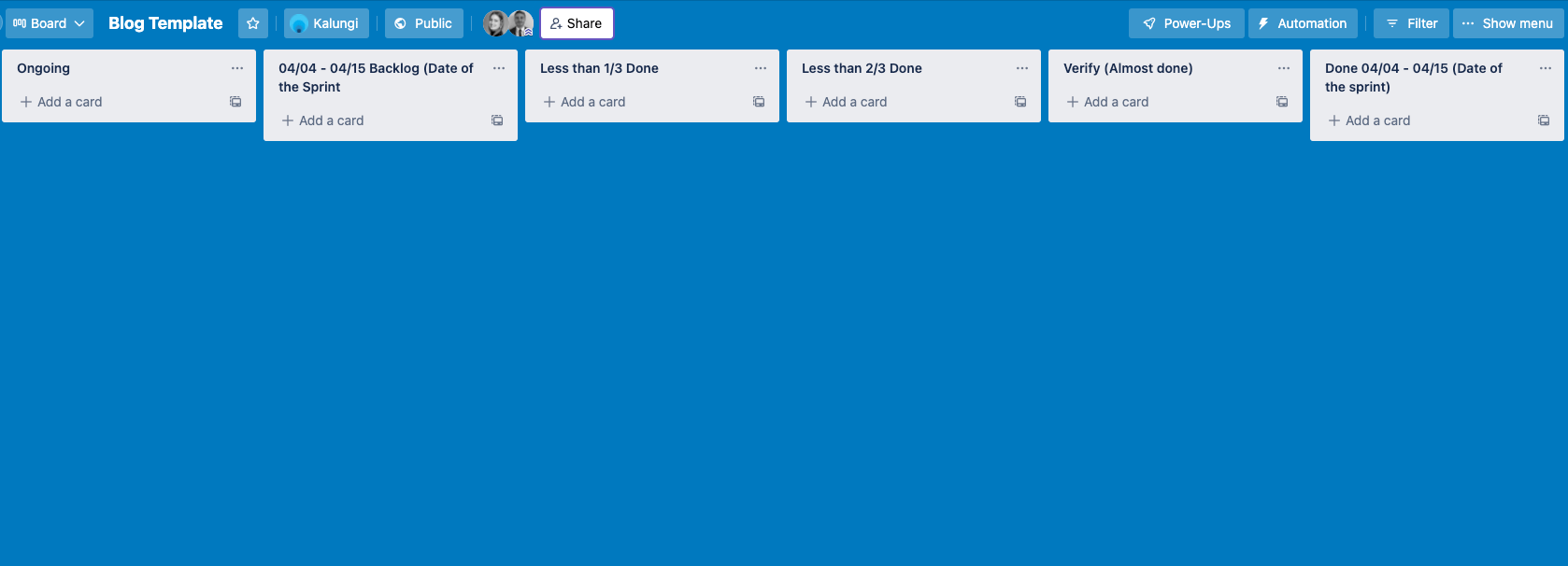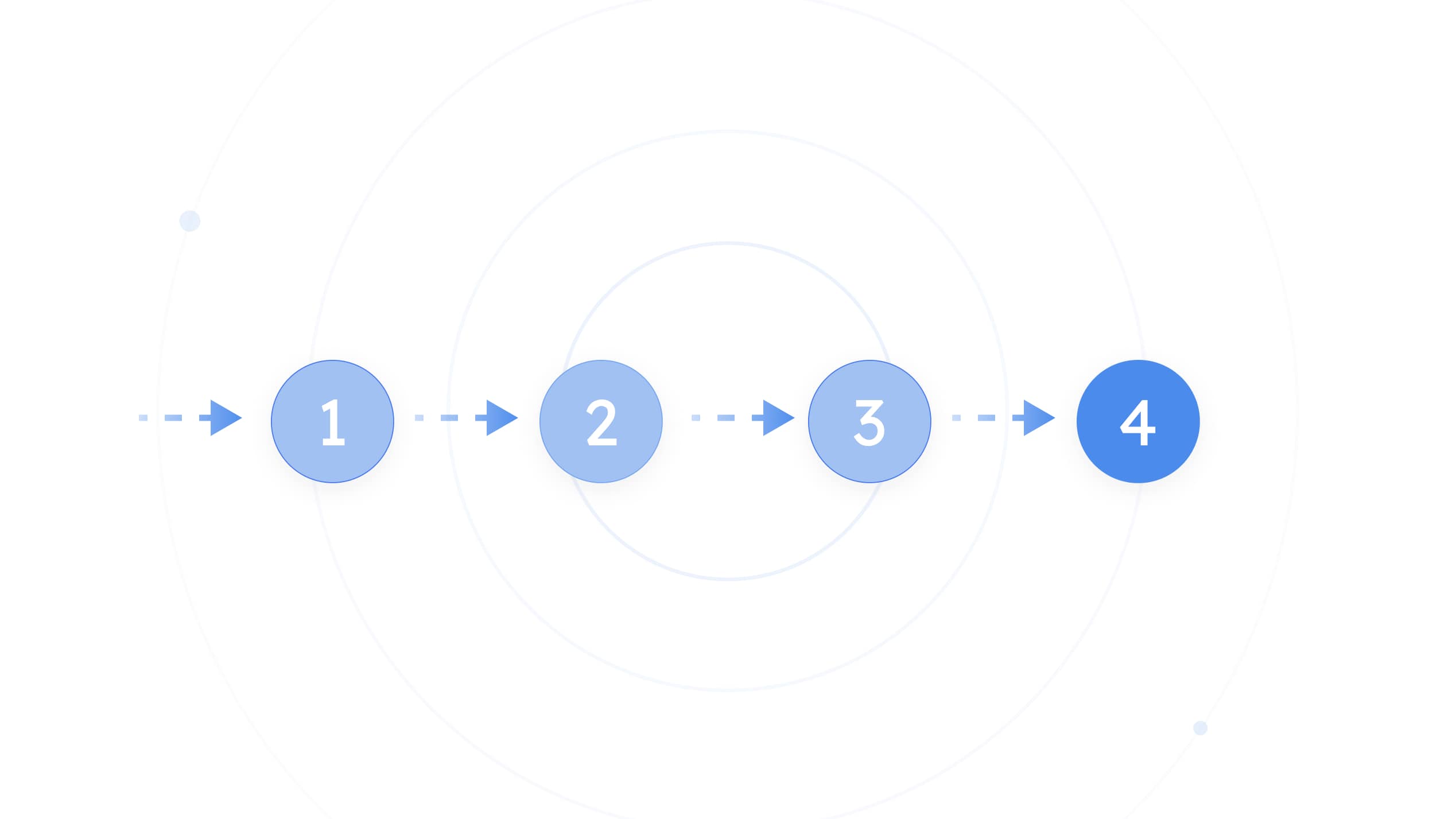As a frequent reader of our blogs, you already know that Kalungi takes pride in doing things with purpose. Increasing productivity and team cohesion is the ultimate goal of every leader. Many feel that the overall team communication lacks accuracy and ultimately affects the quality and the efficiency of the work produced. How are some teams outperforming others?
Strategic planning is one of the critical components of the Kalungi playbook and does not have to be complex. After working with close to a hundred companies, Kalungi found a common denominator that might help you: the Scrum methodology -a well-defined framework that helps teams worldwide reach their best potential. You can use multiple tools for implementation, such as Asana, Jira, or Microsoft Tasks. We use Trello boards for every engagement we run, and we know that a clean board is a synonym for a well-run engagement.
All B2B SaaS companies can and should take advantage of this Scrum framework. It’s been proven to improve product completion outcomes and reduce completion time while increasing the positive dynamic within your team. Successful marketing project development is challenging, deadlines are hard to meet, and competition is fear in the digital world. Falling behind schedule can be critical and proper implementation of Scrums will impact the success of your B2B Saas venture.
The agile methodology in product management
As a marketer, you are familiar with the concept of the life-cycle stages, and understanding what Scrums are should be fairly easy. An Agile Methodology is a practice that promotes continuous iteration of development and testing throughout all life cycle stages of your project development, and it is centered around four core values:
- Individual and interaction
- User stories
- Customer collaboration
- adaptability
What is a Scrum?
At Kalungi, as a B2B SaaS marketing agency, we help you optimize your project completion by setting SMARTER marketing goals. Every quarter we define your company’s objective (aligned with your growth priorities and financial goals) and measure success with objectives and key results (OKRs).
A Scrum is a subdivision of strategic planning with a leader or Scrum master in charge of removing all obstacles to completing the project. It is broken down into sprints. While OKRs remain the same throughout the quarter, the roadmap toward successful completion of these goals must be adaptable and provide the flexibility to adjust in a timely manner. Using sprints provides iterative and incremental processes that help in five different ways:
- Improve the quality of the marketing practices
- Set accurate metrics for tracking marketing activities
- Make customer experience better
- Optimize marketing effort
- Accelerate revenue growth and ROI
- Enhance team collaboration for a common goal
What is a Sprint?
If you feel like I am playing with Russian dolls, you are doing great right now. Bare with me as you get to the bottom of it. Sprints are cycles that help with speed of delivery, ensure quality and mitigate risks. Each Sprint is limited in time, ideally two weeks. If you think a project will last longer than this, find a way to break it down into smaller sub-projects. It will help you bring it to the finish line faster. To track the progress of each task composing your sprint, you want to create different status:
- Backlog Sprint 1 (day 1 to 14): This is where you start listing the tasks you and your team must complete towards the completion of your goals.
- Less than a third done
- Less than two-thirds done
- Verify/Almost done (Q/A processes)
- Done

From start to finish, every task will progress from one stage to another until complete. You may add an “on-going” column for tasks that are not supposed to be completed but rather continuous in time.
How do you implement Scrum?
Now that you have the theoretical framework in mind, download the template below as a walk thought for your first Scrum implementation. You can now use this framework to empower your team and see the difference in productivity you want. Choose team leads and allow them to own their sprints. Using scrum will bring your team closer to each other as they will be able to monitor and manage progress together while working toward common goals.
Conveying meaning to one's work is the key to employee engagement, and you’ll be amazed how quickly team cooperation improves when using the Scrum methodology. Engage your team through the progress of the business growth and join thousands of thriving businesses that use scrum methodology.
